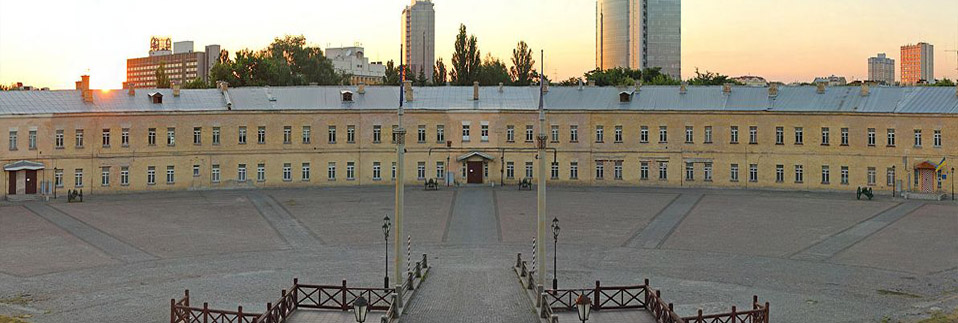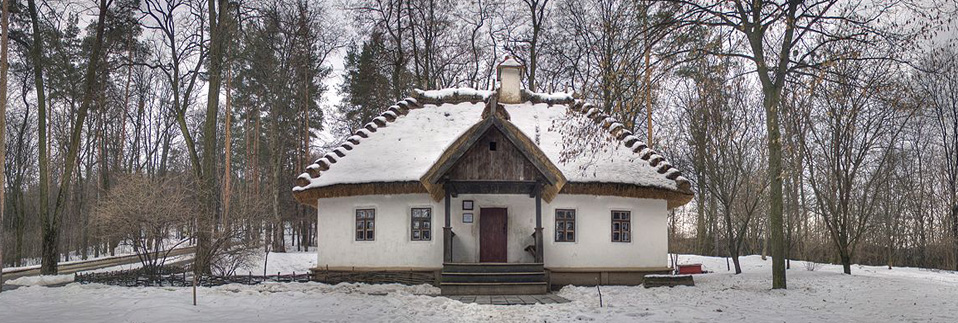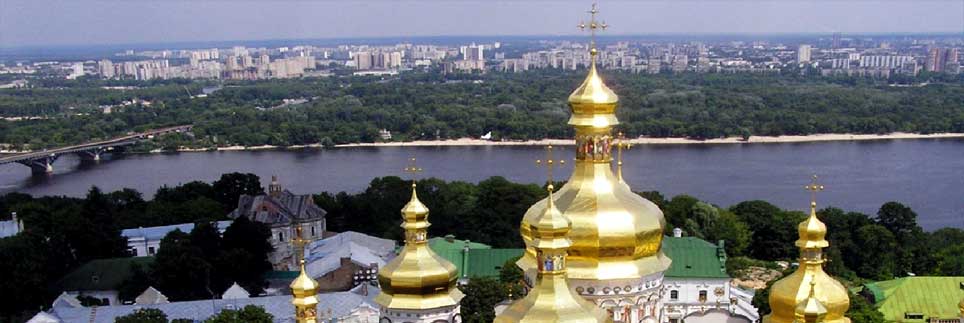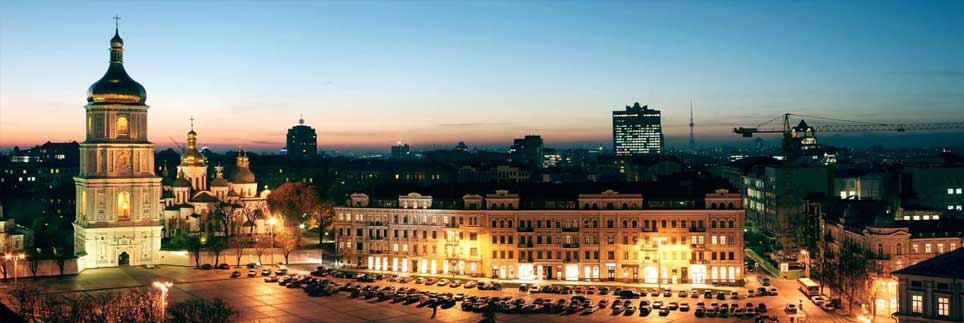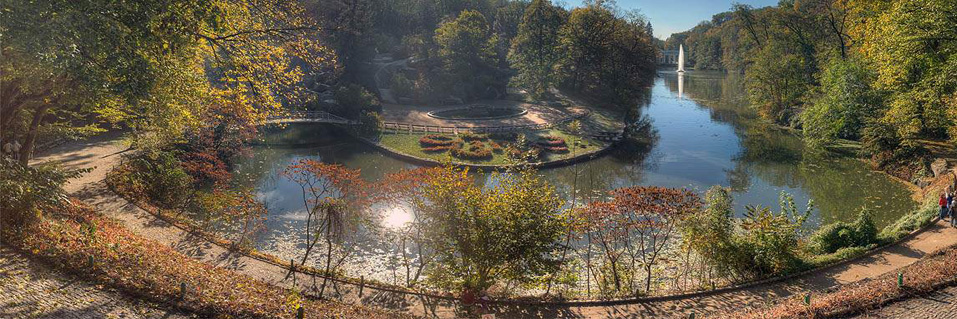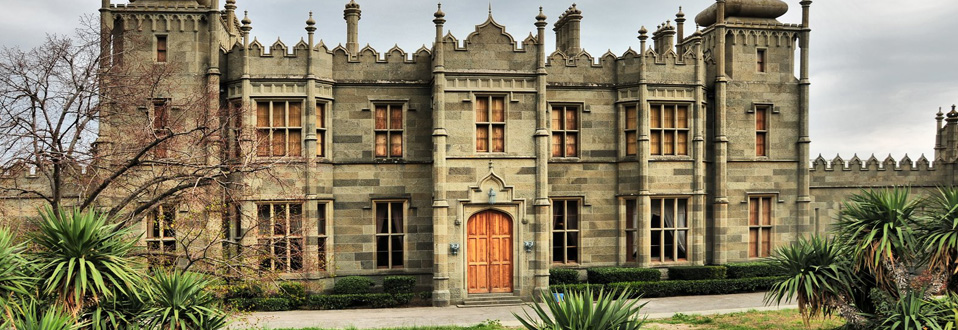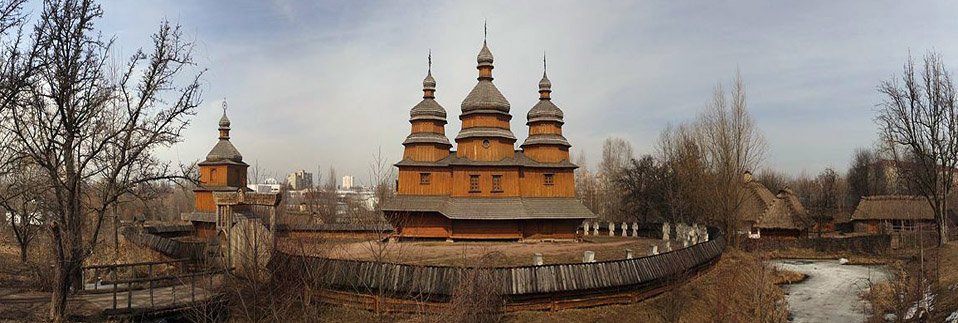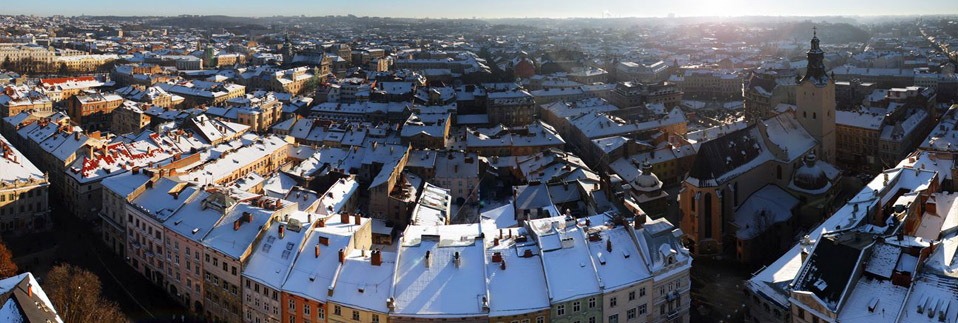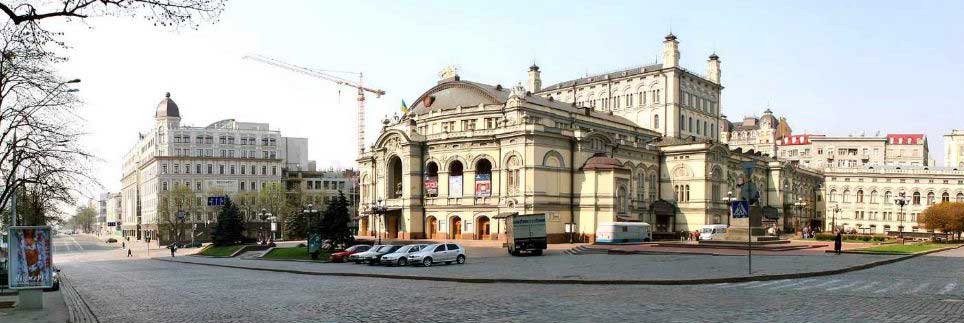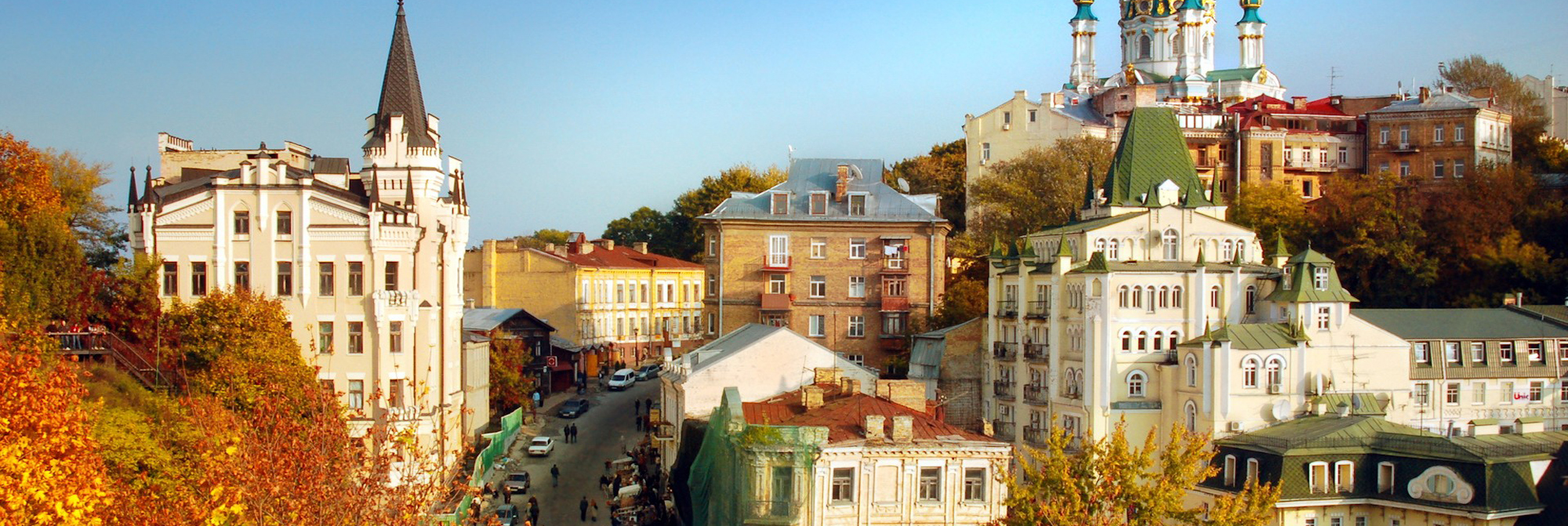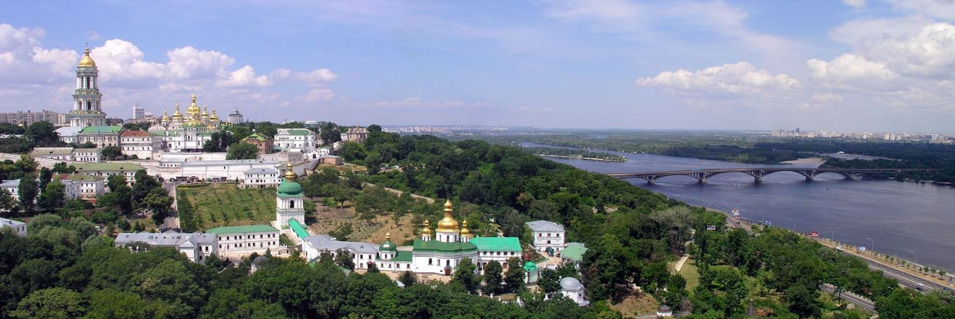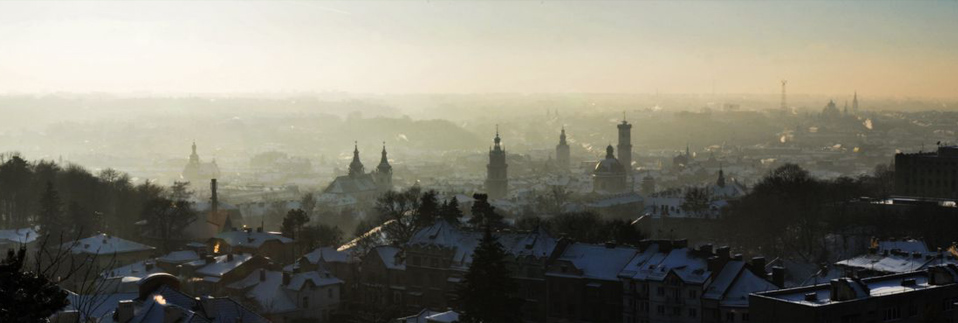Nothern Ukraine
Chernigov Region (Ukr. Chernihiv Oblast)
The region as an administrative economic territory unit was formed in 1932. Its territory of 31,900 square km makes 5% of the country territory and the region is one of the largest in Ukraine. It is distributed in the North of the country, on the middle Dnieper left bank and in the Desna basin. The population estimates 1,032,000 that make a little more than 2% of the population of Ukraine. The central and southern districts are populated most densely, urban population makes 59% and rural - 41%.
Chernigov region lies within geographical zones of mixed forests and forest steppe; the forests cover 20% of the Territory. Pine, oak, birch, aspen, poplar, and hornbeam forests prevail in the northern region. Oaks, conifers have a great share of its southern forests. Soddy podzolic soils in the region to the North and podzolized and leached chernozems in the South in combination with mild climate are favourable for agriculture. The region is covered by dense network of rivers, ponds and lakes. Considerable territory is occupied by flood plain meadows. Climate is temperate continental with rather mild winter and warm and humid summer.
Favourable climate conditions, diversity of flora and fauna, mineral water sources, availability of nature reserves, make the region territory rather attractive both for the short term and long term kinds of rest. The Trostianets dendropark occupies a special place among the nature protecting objects of Ukraine. The mineral resources are represented by: oil, gas, condensate, peat, high quality glass sands, bischofite, and chalk. There are about 15 deposits of high quality clays fit for production of slate and facing tile, pottery, and ceramics and chalk.
The uniqueness of economic geographical position of the region is determined by its location on the border of three states: Ukraine, Russia (199 km of the state frontier) and Belarus (227 km of the state frontier), by its proximity to Kiev, the capital of Ukraine, and its well developed transport system. The region's territory is crossed by some motor roads of national importance such as Odessa-Kiev-St.Petersburg and Kiev-Moscow.
Chernigov region to-day provides above 70% of the overall national production of wool fabric and 70-80%% of wallpaper, and 30% of chemical fibres and wires, about 20% of extraction of oil. It is the only region in Ukraine which produces cord fabric, fire engines and protein casing. The food, fuel, machine engineering and light industries are those of priority in the industrial structure. The forestry, woodworking and pulp and paper, power, chemical and oil-chemical industries are also of considerable significance. The region is an important supplier to the all Ukrainian wood markets: 11 lumber mills and 6 furniture factories are distributed in its territory. The food industry enterprises produces sugar, meat, butter, fat cheese, canned fruit and vegetables, cigarettes..
The region possesses considerable agriculture potential and is one of the most developed agrarian regions in Ukraine. It is characterized as the region of intensive agriculture with a large share of technical cultures. Today Chernigov Region provides one third of national production of flax fibre.
The region supports the external economic relations with 81 countries and carries out export to more than 60 countries of the world. The region's geographic position on the border of three states (Ukraine, Russia and Belarus), its rich natural resources, availability of relatively inexpensive labouг force, the access to the markets of Ukraine and CIS countries, all make the Chernigov region rather attractive for foreign investments. Great Britain, Germany, Russia, Belarus, Belgium, Lithuania, Brazil, USA and Netherlands are among the most trading partners and major investors. The investments are distributed mainly into the food industry.
Chernigov region is one of the most attractive travel destinations, its tourist potential is among the top in Ukraine. This can be explained by two main factors: the region has very rich history and, fortunately, many historical and diverse architectural monuments have survived – more than 100 architectural monuments of XI-XIX cc. can be included into the tourist routes.
First settlement appeared here in the early Paleolithic time more than 50 thousand years ago. The scientists discovered on the territory of present Chernigov region more 20 settlements of that period. At the beginning of the first millenium A.D. Slavic tribes settled in this area. Their settlements grew and became stronger and by the second half of the VII c. several of these settlements fused and thus formed towns. In the VII-VIII cc it was inhabited by Slavic tribes of Severians (Siverians) and Polians.
In the IX-X cc. these lands were incorporated into the Kievan Rus State and got the name of Chernigov-Seversky Principality. As to the territory, wealth, trade links and political importance it was second to Kiev Principality. The population was engaged in agriculture and different crafts. In the XI c. the principality was in constant war conflicts with militant cattle breeding tribe of Polovtsy. It was the time of internecine clashes that resulted in the XII c in the disintegration of this big principality and formation of smaller principalities, among which the leading role belonged to Chernigov and Novgorod-Seversky. About this very interesting period one can learn on visiting Novgorod-Seversky, a town associated with renowned masterpiece of medieval epic “Tale of Igor’s Host” that described the unsuccessful campaign of Prince Igor against Polovtsy.
In 1239-1240 these lands were raided and devastated by Tartar-Mongols who controlled these newly formed principalities to the mid-XIV c. Especially suffered the southern and southern-eastern parts. Exhausted by the internecine wars and the Tartar-Mongolian yoke Chernigov-Seversky lands could not oppose the Lithuanian Principality that established here its domination in the mid- XIV c. The war between Moscow and Lithuanian Principalities ended in 1503 by concluding a truce according to which these lands were ceded to Russia. But in hundred years a new war between Russia and Rech Pospolita (“Union of Lublin” pact in 1569 that united Poland and Lithuania into a single state, existed till 1795) started and in 1618 Chernigov lands were torn from Russia and brought under the Polish domination. In spite of national and religious oppression it was a period of rather intensive economic development. Almost all big towns in the first half of the XVII c. had close trade relations with many European cities and were given the Magdeburg Law rights that existed till the end of XVIII c.
In 1635 Polish government formed Chernigov province that was liquidated at the beginning of the liberation war of the Ukrainians against Poland (1648-1654). It was the period of the formation of the Cossack regiments. It should be mentioned that at that specific historic period the word “regiment” corresponded not only to the military unit but also to the territory where it was quartered, and the colonel carried out not only the military but juridical, economic and cultural life on its territory. Chernigov regiment was organized in 1648 (liquidated in 1781), and in 1649 it numbered 7 “centenaries” (“squadrons” that as a rule much exceeded hundred men). The territory of the present region was divided between 4 regiments: Chernigov, Nezhin, Priluky and Starodub. After the war and Pereiaslav agreement (1654) these lands became autonomous Russian territories under the administration of Hetman.
In 1669 Baturin became the residence of Ukrainian Hetmans of the Left-Bank Ukraine and it meant that it was its capital. During the war between Russia and Sweden when part of the Ukrainian Cossacks supported Hetman Mazepa who, expecting to get independence for Ukraine, sided the Swedish King Charles XII against the Russian Tsar Peter the Great, and the other part was on the Tsar’s side, the local Cossacks supported their Hetman. This defience bidden to Russian Tsar was cruelly suppressed. In 1708 Baturin was raised to the ground, the capital was moved to Glukhov. But in 1750 the last Hetman of Ukraine Kiril Razumovsky was allowed to restore Baturin and it again for a short period became the capital of Hetmanate.
In 1775 Empress Catherine II put an end to the relatively independent Cossack Hetmanate and its regimental system of administration was liquidated. The present Chernigov region territories were divided between Chernigov and Novgorod-Seversky vicegerencies (1782-1796). Later in 1797-1802 this land became part of Little Russian (official name of Ukraine) gubernia and since 1802 it was transformed into Chernigov gubernia of Russian Empire.
The end of the XIX – beginning of the XX centuries was characterized by rapid development of timber, woodworking, food and lights industries that were represented by numerous small enterprises. The fronts of WWI passed Chernigov lands but in 1917-1921 the region was turned into the severe clashes between the supporters of the Soviet power and their opponents. The Soviet power was proclaimed in main towns in January 1918. But soon these lands were occupied by the Germans. In summer 1918 big uprising against the invaders and Hetman Skoropadsky forces inflamed the region. Only in 1922 these territories started to recover after the ruin caused by the Revolution and Civil War.
Chernigov land suffered serious during the years of Great Patriotic War. 127,000 people were killed and 41,000 were taken to labour camps in Germany. It should be mentioned that the first partisan detachments on the territory of Ukraine appeared in Chernigov and neighbouring Sumy regions in autumn 1941. The northern part of the region is covered with dense forests where the German troops were sparse and they didn’t take risk to go deeper into the woods. This situation helped the underground groups of resistance and small army units that broke through the German encirclement to join into well organized strong detachments. The most famous was the partisan unit under the command of Alexei Fedorov who was awarded Hero of the Soviet Inion title twice.
Concerning the number of historical and architectural monuments Chernigov region is unique. It has the biggest number of the monuments dating from the period of Kievan Rus State, above 200 of them are of world significance. The capital of the region – Chernigov has its biggest collection and can be called the city-museum. Old town Nezhin has the biggest number of religious constructions of Ukrainian baroque and classic styles of the XVII-XVIII cc.; the town has also rich history of the Greek community. If you want to plunge into the life of famous Ukrainian families and touch the atmosphere of the estates of the XVIII-XIX cc. take a trip to Kachanovka and Sokirintsy. One of the architectural gems of the XVIII c. is the Cathedral of The Nativity of the Mother of God in Kozelets. Some kilometres to the North and you are in the native village of the last Ukrainian Hetman Kiril Razumovsky Lemeshy.
These are only some the most well known and easy to be reached tourists sites in Chernigov region. And what is essential for any traveler - practically all these visits can be organized both from Chernigov and from Kiev. If you want to see other places of interest you have heard about do not hesitate and address OLYMP, we know what to show and how to organize such trips.
To learn more about sights, excursions and tours in this region click here
Sumy Region (Ukr. Sumy Oblast)

 The region is the youngest in the country, it was established in 1939. It lies in the northern-eastern Ukraine and has the longest border with Russian Federation in comparison to other border regions. Its area is 23,800 sq.km (3.9% of the country), its population estimates 1,369 800 people (about 3% of all Ukrainian), 65% are urban and 35% rural. Ukrainians make about 85%, Russians make 14% and they live more densely in the Eastern part; Byelorussians, who make 1%, live in the Northern part. Other nationalities are in minority. About 500 differernt religious congregations that represent about 20 denominations are active on the territory of the region. The leading place is occupied by Ukrainian Orthodox Church of Moscow Patriarchate, than come numerous Evangelical Christian-Baptists.
The region is the youngest in the country, it was established in 1939. It lies in the northern-eastern Ukraine and has the longest border with Russian Federation in comparison to other border regions. Its area is 23,800 sq.km (3.9% of the country), its population estimates 1,369 800 people (about 3% of all Ukrainian), 65% are urban and 35% rural. Ukrainians make about 85%, Russians make 14% and they live more densely in the Eastern part; Byelorussians, who make 1%, live in the Northern part. Other nationalities are in minority. About 500 differernt religious congregations that represent about 20 denominations are active on the territory of the region. The leading place is occupied by Ukrainian Orthodox Church of Moscow Patriarchate, than come numerous Evangelical Christian-Baptists.
![]()
Sumy region is located in the Dnieper lowland in the Polessia and the forest-steppe zones. It is mostly plain overgrown at many places with forests. It has many small rivers and lakes, the main rivers are the Desna and the Seim. The climate is temperate-continental with warm summer and mild winter. Often spring frosts are dangerous for the crops. Sumy land is rich in oil, natural gas, peat, high-quality quartzite, phosphorites, rock salt, potassium, gypsum, sulphur and chalk. Archaeological digs have revealed that the area, occupied now by Sumy region, was inhabited as far back as 15 thousand years ago. It was here that for the first time on the territory of the former USSR the bones of a Mammoth were found in 1839. During the time of Neolith there lived numerous tribes engaged in hunting and fishing. Available historical evidence enables one to say that in the first millennium B. C. this area was inhabited by tribes of different origin, mostly proto-Slavic and later Slavic. For some time the Scythians of the settled kind, not nomadic, tilled the land here, and later they were superseded by other tribes and finely by the Slavs. We even know the name of the tribe - the Severians (or Siverians).

Long process of social and economic development of the eastern Slavs caused the formation of feudal relations and establishment of one of the most powerful states of that time – Kievan Rus. In the late IX c. the land of Sumy (that is the area that now bears this name and about the origin of the name you can read in the “Tours and Excursion”) was incorporated into the Kievan Rus State, first of Pereiaslav and Chernigov Principalities, and in the mid-XII c. it was part of Novgorod-Seversky Principality. In spite of constant attacks of nomads, these lands were densely populated. On the territory of to-day’s region there have been discovered more than 80 Old Russian settlement and burial grounds.

The first half of the XII c. was characterized by internecine wars and clashes that allowed the Polovtsy nomadic tribes to take advantage of this situation and launched destructive attacks on the principalities. In 1239 the Tartar-Mongols started their plundering raids that didn’t stop for hundred years. When in the 1350-1360 the Lithuanian Principality conquered a major part of the present-day Sumy region, it was devastated and rare populated. According to the peace treaty of 1503, which ended the war with Lithuania, these lands were ceded to Moscow Principality. In the XVI-XVII cc. this territory was used by Moscow State as a defending shield in the South against the Tartars and the Turks. The towns Putivl and Lebedin stood on the border with Poland.
The beginning of the XVII c. opened a new page in the history of this land. Thousand of fugitives from the Right Bank Ukraine, suffering under the Polish domination and seeking for the refuge, flooded here to the free territories. Soon this land got the name of Slobodskaia Ukraine (free land, “Slobodian” or “Slobozhanschyna” in Ukr.). Russian government encouraged this process and helped to construct fortified Cossack settlements that strengthened the southern borders of Russia; cultural autonomy was promised to the Ukrainian population. In 1652 the first Cossack regiment was formed here. In a short period, les than 30 years, the former “Wild Field” was turned into a flourishing land.
In 1708-1709 this area was involved into the national tragedy. Part of the Ukrainian Cossacks supported Hetman Mazepa who sided the Swedish King Charles XII against the Russian Tsar Peter the Great expecting to get independence for Ukraine, and the other part was on the Tsar’s side. It resulted in numerous repressions, victims and tortures. After the Hetman’s capital Baturin was destroyed, Glukhov became a new capital. The end of the XVIII c. put an end to the relatively independent Cossack Hetmanate and its regimental system of administration. Russian Government generously presented the lands of present Sumy region to Russian and Ukrainian nobility.
Favourable geographical location, the abolition of serfdom in 1861 and the construction of the rail road urged the development of the industrial potential of the region, though for the next 50-60 years the agricultural segment prevailed in the region’s economy. The years of the Revolution of 1917 and the Civil War till 1919 hindered this development. It should be mentioned that in comparison with big industrial regions in the Eastern and Central Ukraine the establishment of the Soviet power took here longer time, especially in the remote villages lost in the woods.
In 1932 the administrative reform was organized in Ukraine. The newly formed Chernigov, Poltava and Kharkov regions were transformed into very big units that faced difficulties in running the political and especially economic activity. That is why in 1939 a new “Sumy region” was organized by uniting 12 districts of Kharkov, 17 districts of Chernigov and 2 districts of Poltava regions. During the WWII the region was devastated by numerous battles and approximately 111,000 people were killed. Sumy region was a basic place of the partisan movement. Only on the north of the region 35 partisan camps were formed.
To-day Sumy Region has the highly developed diversified industrial complex. 40% of national volume of oil and 10% of natural gas are extracted here. The extraction of high-quality quartzite used for production of silicon and ferro-alloys is at high level. The machine-building complex of Sumy Region is specialized on production of hi-tech chemical and oil-extracting equipment, gas-compressor plants, pumps, industrial pipeline armature, technological equipment for processing industries of agroindustrial complex, facilities of automation and others. The enterprises of chemical and petrochemical industry make 10% of the regional industrial volume. Its enterprises produce mineral fertilizers, sulphur acid, mineral pigments, forage additives, chemical reagents, paint and varnish products, magnetic ribbon, film and photo materials, industrial rubber wares and others.
The food is the leading industry of the region. For the last years the most direct foreign investments were attracted in this sphere. Dairy commodity producers of Sumy region are well known in Ukraine. Local beverages are also highly appraised.
Sumy Region is the agrarian land. There are almost 1,500 agricultural enterprises in the regional agricultural complex. The agricultural segment plays an important role in the economy of the region in spite of the fact that there is not so much of arable land here. The region produces winter wheat and rye, food corn, sugar beets, rape, sunflower seeds, flax, hemps, potatoes. Local farmers are also engaged in cattle breeding, milk and meat production.
Light industry is represented by shoe and clothes making factories. To-day their activity almost for 100% is ensured by the orders from foreign counties, especially from USA that provides them with technology and materials.
The most interesting tourist places are located in the central city of Sumy that can boast for some real architectural gems and museums. Its contemporary, small picturesque town Lebedin is a nice place to see and to learn more about the history. There are three towns which are much older than Sumy itself - Putivl, where one can learn about the times of Kievan Rus State and about the partisan movement during the WWII; old town of Romny is worth to visit too, and do not miss a trip to Glukhov that has become a historical-architectural reserve where one can get acquainted with the period of Hetmanate in the XVIII c. Only a few places of interest have been mentioned, but there is a lot more to discover in the land of Sumy. Come and see. You’ll take away with you very good memories.


